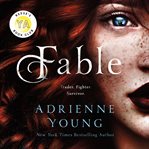Review by Booklist Review
The northern town of Nordlor is built entirely from old ships, whose wood causes the buildings to sway as if still at sea. It's here that 10-year-old Oona resides, unloved because a prediction promised that she would be a boy. With neglectful parents and unkind sisters, there's something of Roald Dahl's Matilda in Oona, who loves to read, despite not being allowed to go to school, and yearns to sail with her father aboard The Plucky Leopard. She gets her chance at the latter when she stows away on her father's ship before it sets sail for a whaling trip in the Great Northern Sea. Oona quickly proves herself a brave and capable member of the crew, finally receiving the approval from her father she always craved. More significantly, however, she bonds with the ship's navigator, who teaches her to read maps and the stars. Myth and reality collide in the icy waters in a wondrous encounter that opens Oona's eyes to her father's true nature. She is as intelligent and intrepid a protagonist as readers could wish for, and Woods' (The Boy, the Bird, and the Coffin Maker, 2018) intoxicating mix of whimsical details and taut adventure will keep them enrapt. Subplots involving Oona's terrible sisters, lore, and sea cats enrich this already shimmering, Nordic-flavored tale from an incredible storyteller.--Julia Smith Copyright 2019 Booklist
From Booklist, Copyright (c) American Library Association. Used with permission.
Review by School Library Journal Review
Gr 3-6- A plucky girl survives a lonely and unloved beginning to find adventure and happiness in this richly imaginative fantasy that brings to mind Joan Aiken's "Wolves Chronicles" with a dash of Roald Dahl. Oona Britt's father is terribly disappointed when his prophesied son turned out to be yet another daughter and wants to have nothing to do with her. Her mother and six older sisters are equally uncaring (though one of the sisters learns to appreciate Oona's qualities and avoids an uncomfortably cold fate as a result). But Oona, now 11, is smart and creative. She figures out a way to get an education even though girls aren't supposed to, and refuses to give up her dream to join her father on his whaling ship. To avoid being forced to accompany her mother and sisters to the South to be married off, Oona stows away on the Plucky Leopard, determined to prove herself. With the help of a kindly navigator named Haroyld, who sees in Oona the daughter he and his wife lost at birth, she does just that. Her father seems to be warming toward her, but abandons her entirely when she refuses to help him kill the fabled nardoo. The setting is beautifully rendered, with intricate details. For instance, all the buildings in Nordlor are constructed out of sunken ships; they not only creak and groan, but rock back and forth. VERDICT Strong world-building joins lyrical prose and a fine leavening of humor, adventure, and magic, to make a winning combination.-Mara Alpert, Los Angeles Public Library © Copyright 2019. Library Journals LLC, a wholly owned subsidiary of Media Source, Inc. No redistribution permitted.
(c) Copyright Library Journals LLC, a wholly owned subsidiary of Media Source, Inc. No redistribution permitted.
Review by Kirkus Book Review
A girl in the far north wants to go still farther north.Ten-year-old Oona lives in the village of Nordlor, which sits beside a fjord that stretches to the Great Northern Sea. She wants to be a ship's captain like her father; she wants to catch whales and see the magical creatures called nardoos that might live in the northern ocean. However, Nordlor girls and women aren't allowed on ships at allthey're not even taught to read. Moreover, Oona's own family hates her. Using elements familiar from Western fairy tales (Oona's the seventh child, the youngest, the hated one, the only pretty one) and tall tales (cats who play fiddles and go down with their ship; houses that retain characteristics of the ship whose wood they're built from), Woods gives stowaway Oona the freezing ocean adventure of her dreams, including celestial navigation and an unexpected (and unexplained) connection between nardoos and the northern lights. Allepuz decorates the adventure with nautical sketches in the margins and some appealingly gruff full-page drawings. Unfortunately, a settler/colonialist premise underlies everything: Nordlor is in the "wildnorth," named for a "great explorer," and explicitly "settled" by an entirely white population; indigenous people don't seem to exist or have ever existed, while white people use whale blubber (which they also eat), seal skin, and fox fur.A rousing seafaring adventure about a brave girlbased, alas, on unacknowledged erasure. (Fantasy. 8-11) Copyright Kirkus Reviews, used with permission.
Copyright (c) Kirkus Reviews, used with permission.


